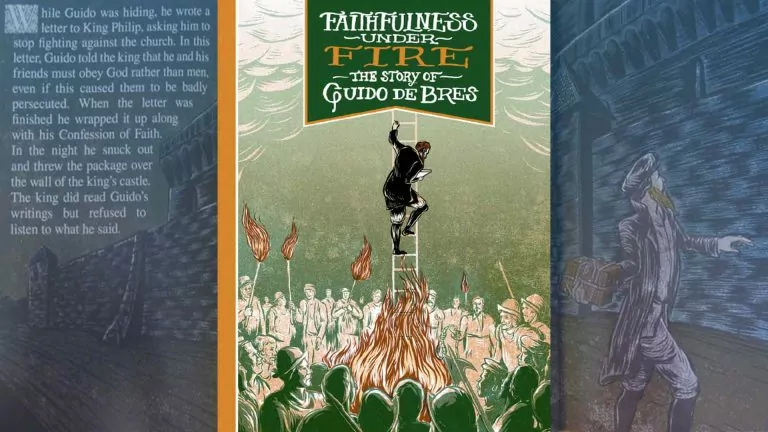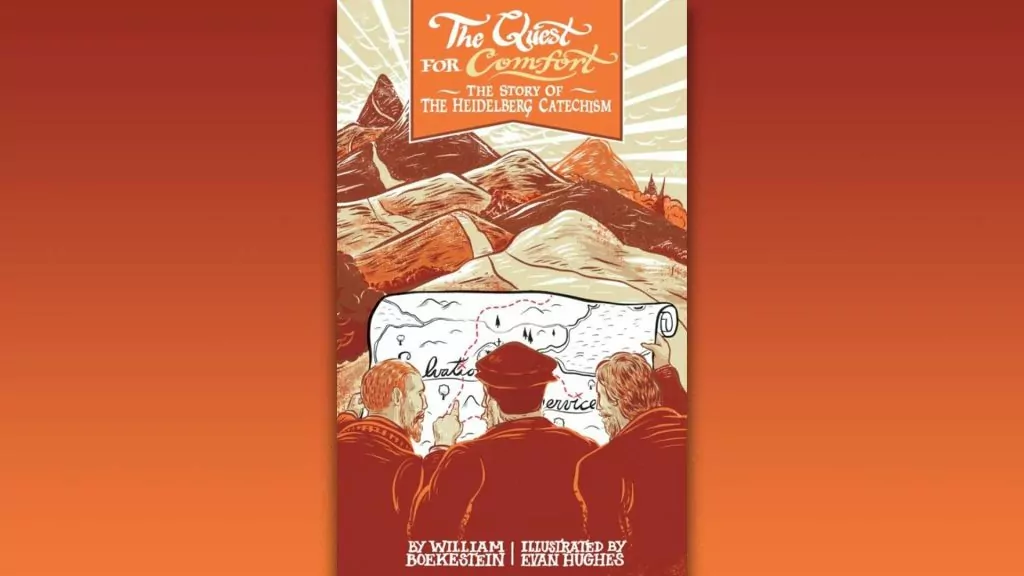by William Boekestein
2010 / 32 pages
“Church history” and “picture book” are almost mutually exclusive terms, but William Boekestein, author (and URC pastor), and Evan Hugues, illustrator, show that they don’t need to be. Faithfulness under Fire is the story of Guido de Brès and how God used this man to craft the Belgic Confession.
De Brès was born in 1522, and once he learned to walk, always seemed to be on the run. Persecution drove him to leave his hometown of Mons, Belgium, and head across the Channel to England. We learn that, for the brief period of Edward VI’s reign, Protestants could find refuge here, but the king’s death prompted Guido to return to Belgium, where he became a traveling preacher. Preaching was against the law, so he was always on the move, and didn’t even dare use his real name.
About midway through the book, we see a great picture of de Brès throwing the Belgic Confession over a tall castle wall. This is where the Catholic King of Spain lived – de Brès hoped he would read the Confession and stop persecuting Protestants. That didn’t happen. But God decided to use de Brès’s efforts another way – the Confession has since spread around the world and been a gift to strengthen and instruct millions of Christians.
As you may recall, Guido de Brès was eventually captured, imprisoned and hanged. A hanging might not seem a good way to end a children’s book, but as Boekestein makes clear this was not the end of the man, but only the means by which he entered “the comfort of his Lord” (and the hanging is never pictured).
I’m not sure if this is a book children will read on their own, but the readable text and fantastic illustrations will certainly keep their attention if mom or dad reads it to them.












